Pressing the “New Game” button takes us to the panorama of a distorted Eiffel Tower. The background music — presumably in French — is calm, soft, with vocals harmonizing with the landscape of the sea and flowers while we are introduced to a mature man, in his early thirties, throwing stones into the sea, as he has probably done since he was a boy.
This man, Gustave, is procrastinating. He does not want to say goodbye, nor deliver flowers to his beloved before her death — a date set for that late afternoon. Not by execution — this is not in Revolutionary France — but by Gommage, which the interlocutor remains unaware of until the first twenty minutes of the introduction of Clair Obscur: Expedition 33, available for PlayStation 5, Xbox Series and PC/Steam.
The Gommage is the driving force behind the game's events — it's the inevitable death, the corporeal disappearance that occurs once a year when a deity named The Paintress rises and paints a new number on her canvas, indiscriminately erasing all individuals who are that age.
There is no logic or purpose, and the people of Lumiere do not seek justification for the act, it just happens. The Paintress puts on a new number, people disappear, and the cycle repeats itself the following year. It's a painful event, a final farewell announced with a set time, but it's part of life, it's natural. At least for Lumiere.
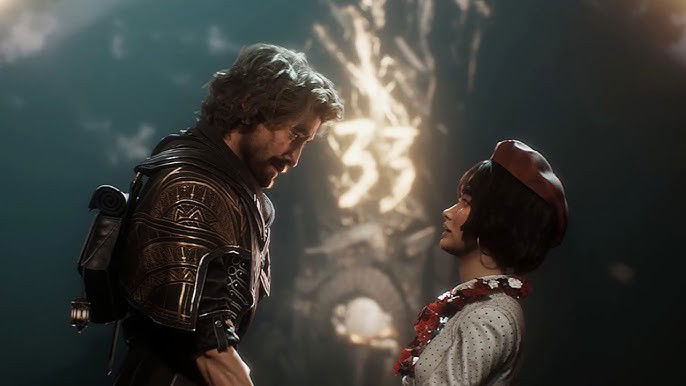
Humanity is watching their gradual extinction, and its only resistance is when an Expedition is sent every year to the Continent, where the Paintress lives, in an effort to stop her. Gustave, even before seeing his beloved disappear before his eyes, joined Expedition 33 along with his adoptive sister Maelle — a young woman who, unlike most of the Expedition members, still has many years to live before being taken by the Gommage.
For some, like the protagonist, the Expedition is the only possible salvation for Lumiere and humanity — reaching the Monolith where the Paintress is and eliminating her is the goal. For others, it is just a fool's quest to an early grave, a way to hasten the inevitable. Perhaps even the Expeditioners believe this: one of their motto, after all, is "Death comes to us all".
So Beautiful, So Merciless
The demonstration of the symbolic carnage caused by the creatures that inhabit this land sets the tone for the explorable world in Clair Obscur. For every tiny detail of inspiring surrealism and landscapes that sound like visual poetry to those who appreciate artistic direction in games, there are also remnants of previous expeditions as a reminder that every creature on the map exists to kill the heroes — and they are there, on the horizons of a world on the brink of end, alone, without any other friendly human contact, to avoid extinction.

For all of Clair Obscur's JRPG roots, with notable inspirations from Final Fantasy X and Persona 3 in both gameplay and themes, there's also a familiarity with survival horror games along the lines of Silent Hill — that butterflies in your stomach, the unease that the next enemy might not be easy, that feeling of looking at a creature in the fog and considering that, perhaps, it's better to avoid it rather than go into confrontation because you're weak, rather than it's strong.
The constant apprehension contrasts with the beauty and calm of each region: there is little time to breathe and much gratitude for the brief moments in which the adventure allows a glimmer of peace. Even among the characters, it is noticeable in some dialogues how they need to joke around and enjoy moments with each other to lighten the mood between themselves and the interlocutor, even though the feeling of urgency hangs in the air at every moment outside the camps and the few areas where there are peaceful creatures to interact with.
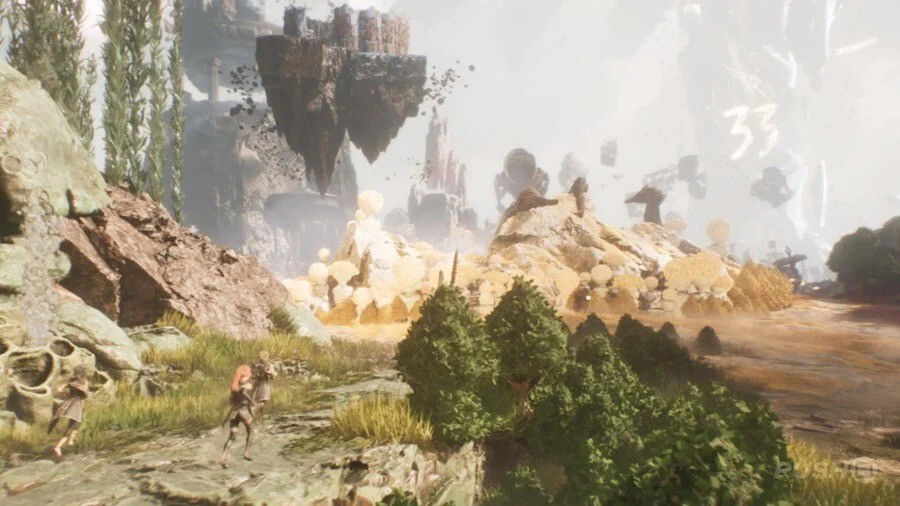
The Continent begs to be explored. The amount of secrets it has, in the traditional mold of a JRPG, is wide, and it will be difficult to check every detail in a few hours or in a linear progression since some regions may have stronger enemies and others require a specific unlock to be accessed. This exploration rewards with new dungeons to discover, items to unlock, side quests, or even minigames — some quite frustrating and others reasonably fun.
Revitalizing Turn-Based Combat
One of the reasons why the player is constantly apprehensive also involves combat. Despite being a French title and developed by a team of former Ubisoft employees, Clair Obscur has very firm roots in the classic JRPG genre, with turn-based combat and strategic planning of how to sequence each skill and character so as not to waste too many resources or prolong battles too much.
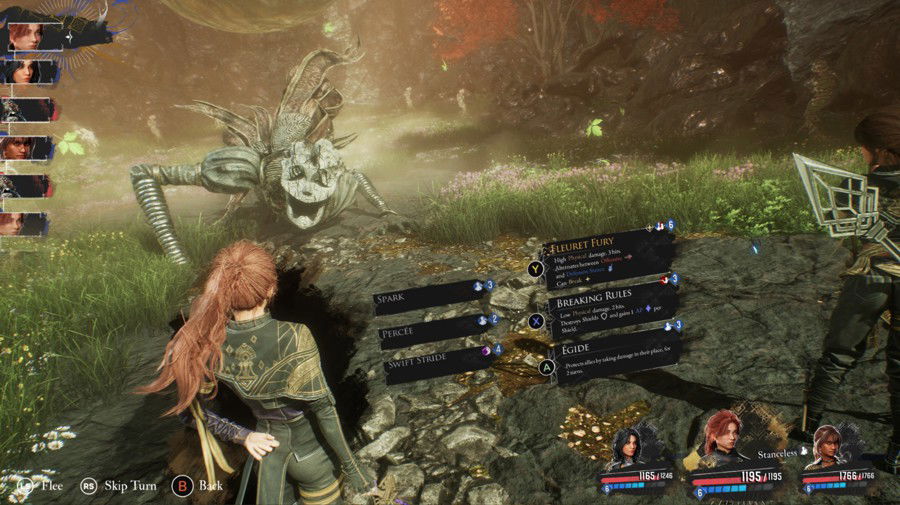
The biggest innovation compared to other games of the genre is the constant use of Quick Time Events during combat. Characters' special actions can fail if the player doesn't press the buttons, and any enemy's attacks can be dodged or even countered by pressing the buttons at the right time — if they fail, the characters will be severely punished with more damage than they can sustain, creating a snowball effect that forces players to follow the movements and sounds emitted by their opponents to identify the pattern of their attacks and adapt to them to dodge or block.
This innovation is what makes Clair Obscur's combat so engaging. One of the common issues with turn-based RPGs for current generations is that the “press button, see effect” formula is unattractive and lacks a sense of urgency in a world where games are increasingly immersive — creating the need to decipher visual and audio codes to win battles keeps the player constantly on their toes, and getting the timing right for each one is rewarding both inside and outside the game, with extra actions for your turn, or that dose of dopamine that the brain produces when making the perfect parry in a game like Dark Souls
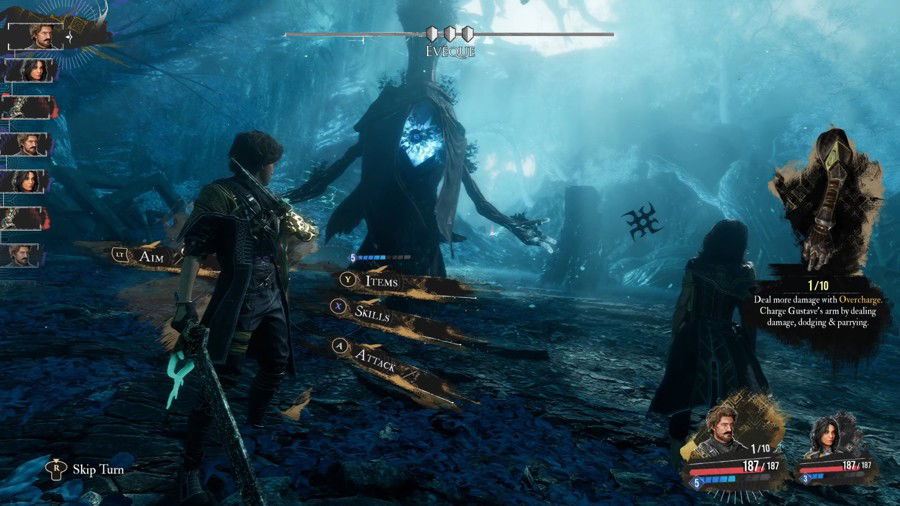
The Soulslike, in fact, seem to be the inspiration for this QTE system. The feeling of agency and the need to read movements and identify patterns is reminiscent of the responsibility that titles like Bloodborne place on the player, under the penalty of being punished with a quick defeat on normal difficulty if they fail too much or refuse to learn.
Depth and Simplicity Contrast in Character Building
One of the big problems with modern RPGs is how the character customization system can go a little too far, to the point that several aspects are neglected by most players. These allow for a wide variety of builds, especially in open-world games, but having a more rigid focus on how to build your characters and ensuring that the player's freedom to shape them is respected without making it overly complex is a challenge that many games still fail to achieve.
Clair Obscur manages to fit its complex combat system with layers of simplicity. Leveling focuses on a distribution of points between the character's stats, chosen at the player's command.
Customization also involves equipment and skill progression. Each character has three passive skill slots that also offer improvements based on their level, in addition to these passives being learned after a few victories and can then be equipped with another parallel system of points and resources, making players balance between which equipment is worth keeping for the buffs and which should be kept because equipping the skills without them would be too expensive.
In addition, attack skills are also limited and customizable: each character can have up to six attacks, each with its own execution cost and distinct effect, all obtained through an individual skill tree whose unlock points are received by gaining levels.
Finding the right build is a challenge of trial and error, and therefore the game offers several chances to get items that reset both acquired skills and points spent on attributes, so the burden of choosing “where to spend each point” does not need to exist — if you think a character works better in a specific way, just reset the stats and try again.
The game also features alternative costumes for all characters, ranging from more casual clothing to beachwear and haircuts. All of them have purely cosmetic properties, without interfering with any element of the character's build.
And the Story?
With approximately 25 hours in the main campaign, Clair Obscur offers a narrative experience filled with punches in the gut and heartbreaking moments. Despite the lack of association and empathy that one may have with most of the characters at the beginning, there is something in each of them that makes them relatable to aspects inherent to human nature and the complexity of emotions that maturation and grief brings.
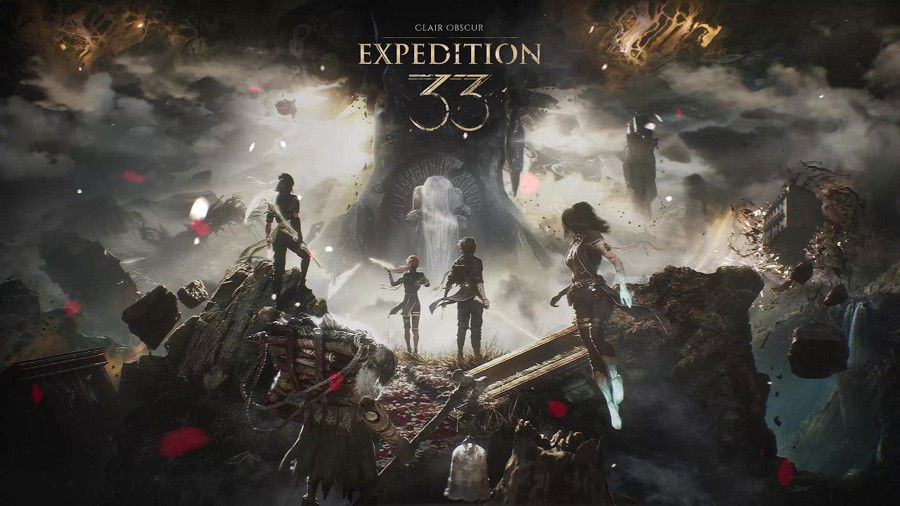
Just like the desolate world in which it is set, the plot is merciless. For every moment where it delivers calm, it pushes the interlocutor into a dozen storms, and while it follows some very predictable tropes, it refuses to deliver the obvious even when it attempts to, putting us on an emotional rollercoaster where we never know what the next hour may bring.
I am being intentionally subtle in this section. Clair Obscur works much better when we don't know anything about its world or its characters — the entire plot's proposal flirts with this lack of knowledge of the interlocutor and how much they want to immerse themselves in the world and discover its mysteries on their own —, but I guarantee that, in narrative terms, it is a work that is worth appreciating every second and more than once.
Not All Roses
For every compliment, however, there is a setback.
Exploring dungeons, for example, can be quite frustrating for some players. It could be due to the lack of a mini-map to guide them, but one of the biggest problems of always having access to a mini-map is spending too much time looking at it instead of the game — and if Clair Obscur tries to reproduce the feeling of the most classic RPGs, the lack of a mini-map is a charm and not a setback.
This point doesn't invalidate the occasional frustrations it causes while exploring. Some regions have several paths that can lead to treasures or stronger enemies, and it's easy to get lost in them if you don't have a clear sense of space — again, not because there's no mini-map, but because the camera's proximity to the character limits the scope of vision in a world that is already gloriously detailed to the point that it sometimes lacks visual logic.
There are ways to know where to go via lanterns and colored signs that you can follow around. However, these don't correct the way the camera is poorly positioned, and the whole problem of getting lost because you took a path and don't know which way back is would be solved if it were a little further away, so the player could have a wider vision of the surroundings.
On the other hand, this same "bad camera" contributes greatly to the oppressive atmosphere of the Continent. There's something claustrophobic about it, and in dangerous dungeons or when characters are low on HP, looking around to avoid being caught off guard by some monster we've overlooked while walking is a constant reminder of the dangers of that land.
The lip sync presents issues in several cutscenes. With a cast of voice actors that includes huge names, such as Ben Starr (Final Fantasy XVI), Charlie Cox (Daredevil) and Jennifer English (Baldur's Gate 3), hearing such recognizable voices and realizing that their lines don't match the characters' movements can be quite frustrating.
Cutscenes also presented frame stability issues on the PlayStation 5 more often than ideal, especially in scenes where a character's face was too close to the camera, or where there were more abrupt movements, which should be properly addressed with a post-launch patch soon.
Pros and Cons
Pros
Cons
Score
9.0
Is Clair Obscur: Expedition 33 Worth Playing?
For a new title from a previously unknown studio, Clair Obscur: Expedition 33 is eerily familiar. It's a shout-out to fans of classic JRPGs who miss the old turn-based combat, as much as it's a nod to Soulslike fans and Survival Horror enthusiasts who want a title that challenges them out of their comfort zone.
The familiarity goes beyond the gameplay aspect. The characters have dilemmas and the game presents problems and issues that are easily relatable to the complexity of living as we mature, and it does so with an exclusive focus on the most important point — humanity. Feeling is about being human, and not knowing how to deal with circumstances and having your own weaknesses are also part of the human experience.
Clair Obscur is definitely a title that I recommend to any RPG fan, whether it has turn-based or real-time combat, and to people who want a story and a game that goes beyond the conventional and presents a plot full of life and creative inspiration, even if these are reflected in the contrast between the radiant colors of the environment and the morbidity of the petrified bodies of previous Expeditions.
The curiosity remains as to how the Clair Obscur universe intends to expand from the assertive success of its debut title. Perhaps it is too early to say that it has the potential to be nominated for Game of the Year, but so far, it has all the qualities and signs to be a strong candidate for RPG of the Year in 2025.
Thanks for reading!







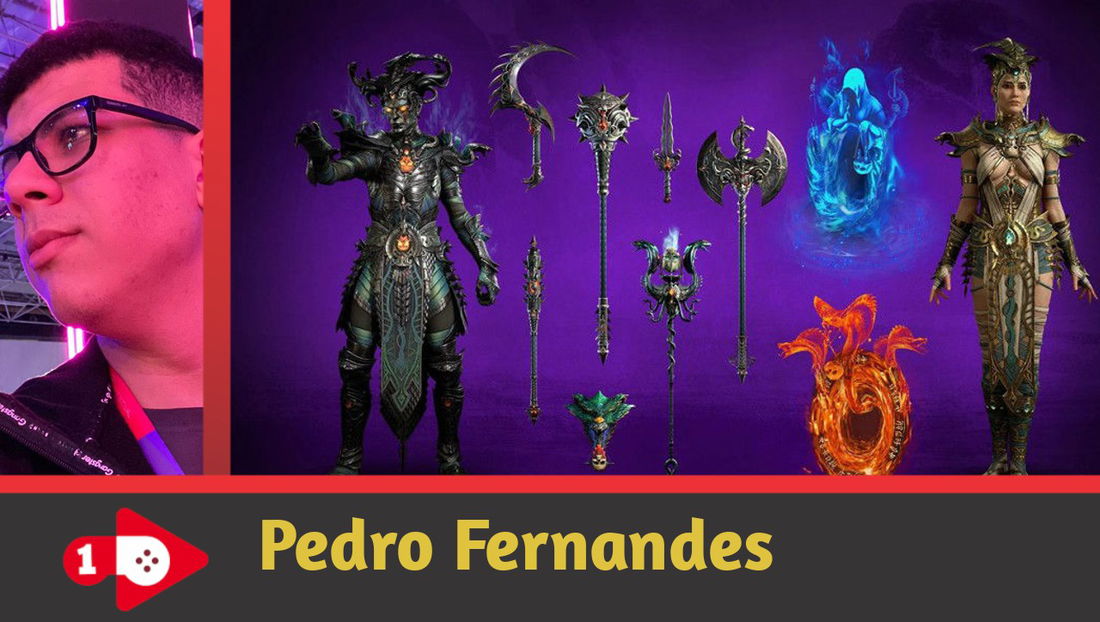



— Comments 0
, Reactions 1
Be the first to comment